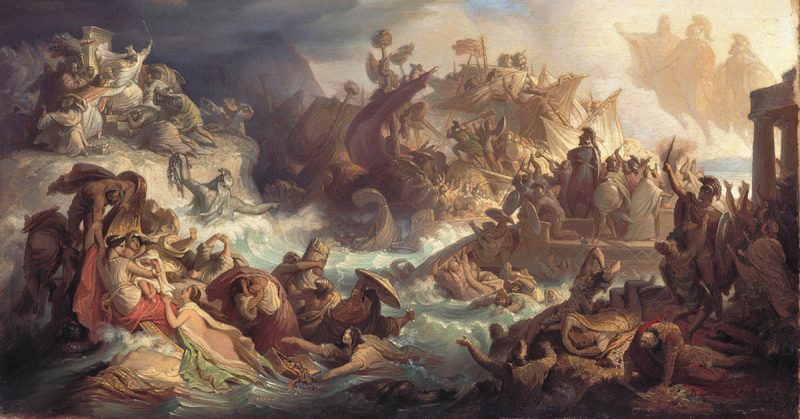Ancient and Medieval generals were often smart enough to avoid battle against a much larger force but throughout history there are many cases where much smaller forces have stood their ground and prevailed. They may have fought because they were trapped, or perhaps they felt they had a superior force through training or armament, or maybe they had such strong beliefs that they would fight to the death to defend. This short list of battles stays in the period before gunpowder as firearms tended to create such serious mismatches among forces that there were countless impressive underdog victories.
Naval Battle of Salamis
The Greco-Persian Wars were full of amazing battles and impressive victories, though Salamis was the first profound and impactful victory against the vast invasion force of the Persians. Prior to this battle the Greeks had fought a valiant battle at Thermopylae and smaller naval engagements but those were delaying defeats. The Athenians had abodanded their city to be burnt by the Persians and all hope rested on the surprise naval battle.
The island of salamis just off the coast of Piraeus was close enough to the mainland to create a winding channel where the 300 Greek ships were able to hide. As the large Persian fleet of around 900 ships sailed into the straits they presented the port sides of their ships to the waiting Greek navy.
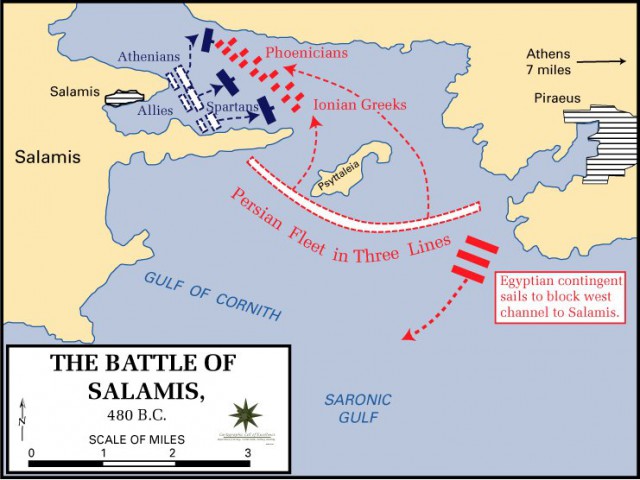
As ship to ship combat was usually won by ramming the sides of an enemy ship with a bronze head this put the Greeks in great position. In the narrow straits the superior naval skills of the Greeks came into play as they constantly got great angles of attack and as proved in the land battles, hand to hand combat heavily favored the Greeks. The Persians lost up to 300 ships sunk or captured compared to 40 Greek ships. This victory made Xerxes take most of his army back to Persia and the remaining force was later defeated on land at Plataea.
Battle of Watling Street
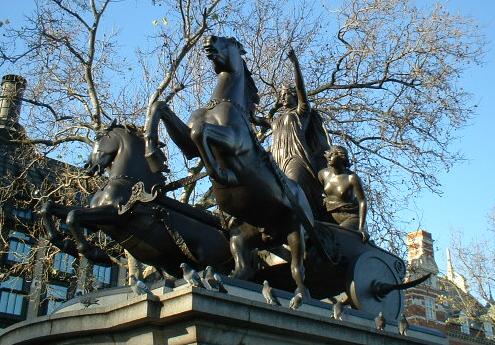
The battle of Watling Street is almost an alternate version of the Spartan stand at Thermopylae, except the defenders won. A small Roman force of around 10,000 was attempting an organize retreat from the revolt raised by Iceni Queen Boudicca. Boudicca had raised nearly 200,000 (more realistic estimates are around 100,000) though they were not all effectively armed as the Romans had them give up their arms prior to the rebellion.
Roman general Suetonius knew he would have to fight eventually so he picked a section of Watling Street that went through a narrow valley and into a forest. Suetonius organized his legions in a tight formation and as Boudicca’s army charged their force was compressed by the valley to match the Roman width. Two volleys of Roman pila stymied an organized charge and the Romans used their superior armor, weapons and discipline and hit the Britons with several organized charges.
The Britons broke but were held back by their pack wagons which were arrayed to give the families a view of the battle. With the Britons in a full panic Suetonius unleased the cavalry and caused utter devastation, killing tens of thousands of the enemy. This victory solidified Roman rule in Southern Britain for centuries.
Battle of Salsu
The battle of Salsu was fought in the 7th century CE between the Korean Goguryeo kingdom and the invading Sui dynasty of China. General Eulji of the Goguryeo fought an active retreat towards Pyongyang with only 10,000 men, mostly cavalry, inflicting heavy losses on the 300,000 man army of the Sui through multiple ambushes.
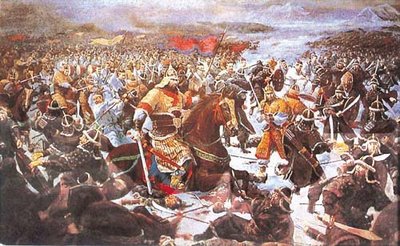
Finally taking a stand at a river near Salsu Eulji let the Chinese start crossing the wide, shallow river. Eulji had men waiting at an upstream dam and destroyed it as the Chinese were almost all crossing. After the floodwaters abated enough Eulji charged the disjointed Chinese forces and caused a nearly instant rout. As Eulji’s army was mostly cavalry they were able to follow and harass the Chinese as they retreated and killed or captured around 90% of the original 300,000 strong army.
Battle of Yarmouk
The battle of Yarmouk was one of the most influential battles regarding the spread of Islam. The Muslims had been growing exponentially since the organization under the Rashidun Caliphate and within four years, challenged the Byzantines for control of the holy Levant area. As the Byzantines were fully Catholic at this point the area had a great deal of significance for them as well.
The Byzantines had a large empire and experienced armies and at the battle of Yarmouk, near the Sea of Galilee, they fielded anywhere from 80-150,000 men compared to the 30-40,000 man force of the Rashidun. On the first day of the two day battle both lines met evenly and had a moderate fight until dusk with limited Byzantine success.
The second day the Byzantines began using their superior numbers to outflank the Muslims but the Muslim general Khalid had strategically positioned cavalry reserves to outflank the Byzantines. Pressure did mount on the Muslims and though some of their number did break they were yelled at by their wives at camp and humiliated into returning to the battle. The lack of men fleeing as well as the perfectly timed counterattacks wore down the large Byzantine force.
The battle lasted several days with each Byzantine breakthrough met with precise counterattacks until Khalid organized the Muslim cavalry into one large unit and rode around into the Byzantine flanks before the Byzantine cavalry could react and threw the real lines into chaos which led to a full rout. The battle decimated Byzantine power in the region and the Rashidun Caliphate gained even more territory over the next few years.
Battle of Didgori
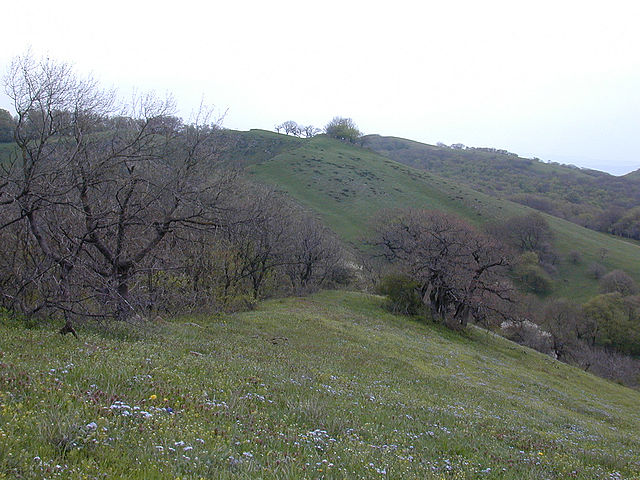
Just as the battle of Yarmouk paved the way for Muslim expansion and Byzantine remission, the battle of Didgori stopped the growth of the Muslim Seljuk Empire and started the growth of the Christian Georgian Empire. As the Crusades through the Muslim territories into disorder, young king David of Georgia took the opportunity to revive the Georgian empire previously under control.
As David regained territory and threatened to regain the old capital of Tbilisi the Seljuk’s sent in a large force likely around 200,000. David had only a force of 56,000, but they were well trained men and were reinforced by several hundred veteran crusaders sent by Baldwin II of Jerusalem.
The battle was fought around the hilly terrain of mount Didgori which seemed to conceal parts of the battlefield. David sent a sizeable force of men to “desert” to the Seljuks which caused several leading Seljuk officers to meet them to negotiate their desertion. At the same time David organized his army to be able to execute a frontal attack combined with flanking attacks.
As soon as the deserters heard the main assault they turned on the Seljuk officers, killing large portions of their higher command. David used the heavy cavalry of the crusaders to punch through the center of the Seljuk force while using holding positions on the wings and flanking with other cavalry. As the Seljuk army was so large it took several pinpoint charges, many personally led by David, to finally rout the Seljuks. The pursuit lasted for days and David captured many thousands of prisoners. With the victory, David was able to capture Tbilisi and ruled a successful Gerosian Empire.
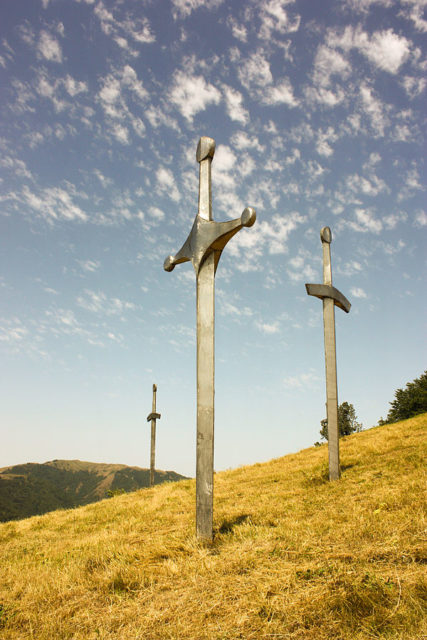
Honorable mentions
There were many cases of a small or unequipped force defeating a larger one throughout history and they cannot all be listed here. Some honorable mentions that may find their way into a future list are:
Battle of Cannae where Hannibal, in Italy surrounded and destroyed a Roman force at least twice the size of his army.
The battle of Aquae Sextiae where Marius and his reformed legions defeated a large force of Barbarians who had wreaked havoc on several previous Roman armies.
Battle of Fei River where the Eastern Jin with 80,000 elite troops protecting their homeland defeated a mixed army of approximately 800,000 men under the Qin Dynasty, largely by fomenting rumors within the large army that other parts had already begun to flee causing a chain reaction of retreat.
Battle of Walaja prior to Yarmouk where the Rashidun Caliphate inflicted heavy losses on the Sassanian Empire despite being outnumbered at least 2-1.
Battle of Agincourt where a beleaguered, outnumbered and diseased army under Henry V defeated a large army of French knights and men-at-arms in French territory.
